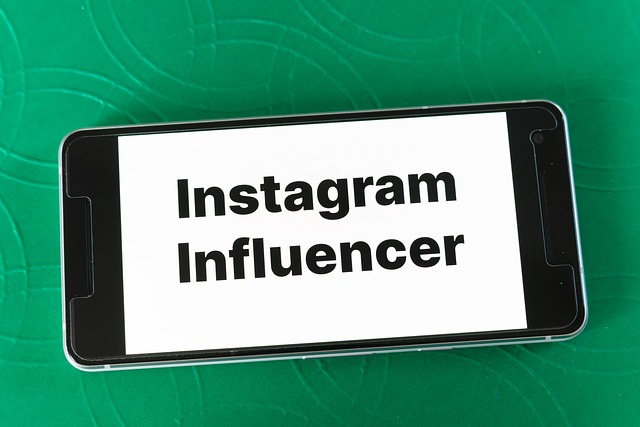Why Open Rates Still Matter
In digital marketing, attention is the choke point. You can have the best product, the cleverest copy, the slickest design—but none of it matters if your email never gets opened. And that’s why the inbox is sacred ground. It’s one of the few places where people voluntarily pause to consume information. If you’re in, you’ve earned a shot. If you’re ignored, you’re forgotten.
Open rates still sit at the top of the funnel—and they still tell a story. Think of them as a temperature check. If your open rates drop, it’s a sign something’s off: maybe your audience is tuning out, your subject lines are stale, or your list is cold. On the flip side, a strong open rate means your audience trusts you enough to keep listening. That alone puts you ahead.
Some quick numbers drive it home: the average email open rate across industries hovers around 21%. But top-performing campaigns tie back to lists that regularly surpass 30–40%. Just nudging your open rate by 5% can lead to thousands more eyeballs over a single campaign. More attention, more clicks, more conversions—it starts at the open.
The inbox isn’t just a delivery space; it’s prime real estate in a crowded world. Treat it like it has value, because it does.
Nail the Subject Line
The subject line is your first—and sometimes only—chance to get noticed. Think of it as a headline with one job: earn the click. Keep it short (under 50 characters is ideal), sharp (say something with purpose), and curiosity-driven (don’t give everything away).
The best subject lines hint at a benefit, spark intrigue, or tap into urgency. High performers include lines like “The mistake you’re probably making,” “Are you missing this one trick?” or “Read this before you hit send.” On the flip side, overused phrases (“Act now!” or “Limited time offer”) and stuffy language tend to sink open rates.
A/B testing is how you separate guesswork from growth. Change one element at a time—the question format, the tone, the length—and track what actually gets opens. Do this regularly. Trends shift, audiences evolve, and a subject line that killed it six months ago might flop today.
Curiosity sells, but clarity keeps readers coming back. Balance both.
Personalization Beyond the First Name
Personalization isn’t just about plugging someone’s name into a subject line anymore. That trick’s worn out and your audience knows it. Real personalization in 2024 means building emails that feel like they were made for the person opening them. Think dynamic content blocks that shift based on user behavior, purchase history, or content preferences—not just their zip code or age.
Instead of firing off the same message to everyone, marketers are slicing their lists by intent. What have they clicked lately? What have they abandoned in their cart? What kind of content do they dwell on? The answers to these questions should drive what shows up in the inbox.
This shift requires better tools and smarter data—but it pays off. When subscribers feel like your emails actually get them, they open more, click more, and unsubscribe less. In other words, personalization is no longer a nice-to-have. It’s a baseline.
For a deeper dive, check out The Role of Personalization in Modern Marketing.
Timing Is Everything
Send at the wrong time, and even the best subject line won’t save you. Timing is one of the most overlooked levers in email marketing, but get it right, and your open rates can see a real lift.
Let’s start with what works. For B2B emails, the sweet spot tends to be mid-morning on Tuesdays or Thursdays—times when people are clearing out their inboxes and actually paying attention. For e-commerce or lifestyle brands, evenings and weekends perform better, especially around product launches or sales. No surprise: when people aren’t working, they’re shopping.
That said, time zones matter—a lot. If half your list lives on the West Coast and you’re scheduling 8AM Eastern sends, you’re missing early engagement from a major chunk of your audience. Many platforms offer time zone-based automation—use it. It’s not just a nice-to-have, it’s basic targeting.
Then there’s the decision between triggered emails and batch campaigns. Triggered emails (like cart abandonments, welcome emails, or product follow-ups) tend to get much higher open rates because they’re timely and expected. Bulk sends, in contrast, can work for newsletter blasts or wide announcements, but have to be planned and timed with more care.
Bottom line: send smart, not just often. Pay attention to your audience’s rhythms—and let the data lead.
The Power of a Clean List
Too many email lists are bloated with ghosts—people who haven’t clicked, opened, or cared in months (or years). Keeping them around isn’t harmless. Inactive subscribers drag down your open rate, reduce engagement averages, and send bad signals to inbox providers. The result? You end up in the spam folder, even for your active readers.
Worse, old addresses can turn into spam traps or bounce altogether, stamping a red flag on your sender reputation. Internet Service Providers (ISPs) are watching. If your emails consistently go unopened or bounce, your deliverability tanks across the board.
So yeah, it hurts.
The fix is part hygiene, part strategy. Prune your list quarterly—or at least twice a year. Zap the dead weight, but not before trying to re-engage. Create a short campaign to win them back: offer value, remind them why they signed up, and make staying in feel worth it. If that doesn’t work, cut the cord.
A clean list doesn’t just boost open rates. It tightens your metrics, improves sender credibility, and gives your actual audience the signal they deserve: you’re here to send value, not noise.
Mobile-First Formatting
More than 70% of emails are opened on a phone. That means if your message looks clunky on a small screen, it’s as good as dead. People won’t pinch and zoom—they’ll swipe and delete. Responsive design isn’t a luxury anymore. It’s the bare minimum.
Start with single-column layouts. Keep your fonts legible—sans-serif at a readable size. Buttons should be finger-friendly, not a game of tap-and-miss. And images need to scale properly or risk breaking the entire experience.
Then there’s preview text. That little gray line under the subject in the inbox? It’s your second hook—and it pulls more weight than most people realize. Write it like you’re pitching a punchline or revealing the first thread of a story. When preview text doesn’t match the subject or looks like filler, open rates suffer.
Design for mobile first, desktop second. It’s not just about opens—it’s about being read, understood, and acted on.
From Subject to Substance
Getting someone to open your email is just the first move. What follows has to justify the click—fast. If your subject line promises gold and your content delivers tin, people bounce. Enough disappointment, and even the best subject line can’t save you next time. Good email marketing aligns the hook (subject), the trailer (preview), and the content (the main event). They should feel like different parts of the same thought, not cobbled from different playbooks.
Think of your email like a handshake that becomes a conversation. It should sound like it came from a consistent voice—casual, clear, maybe a little personal. Don’t bait-and-switch. Don’t overhype. Instead, build trust by delivering exactly what you hinted at. Over time, consistency in tone and content tells your audience they’re in good hands. And when they trust what’s inside, they keep opening.
Metrics That Matter
Let’s get one thing straight: open rates are useful, but only if you know how to read them. First, the benchmarks. Across most industries, a solid open rate lands around 20–25%. Top performers hit 30% or more. But context is king—B2B lists behave differently than eCommerce subscribers. If you’re under 15%, it’s worth digging deeper.
But here’s the twist: Apple’s Mail Privacy Protection (MPP) has made open rate data murky. When Apple pre-loads email content to hide user behavior, it creates false opens. That means your open rate might look better than it actually is—especially if you’ve got a large Apple Mail audience.
So how do you know if people are actually engaging? Look at downstream signals. Are they clicking? Forwarding? Replying? Those actions tell the real story. Combining open rates with click-through rates (CTR), conversion data, and even time-on-site from email referrals gives a fuller picture.
Bottom line: open rates still matter—but they’re not the whole truth. Use them as a pulse check, not a performance badge.
Final Word: Play the Long Game
Open rates matter—but not in a vacuum. If you’re stacking subject lines just to spike that metric, you’re playing the short game. Vanity opens don’t translate to clicks, conversions, or trust. They look good on a dashboard and that’s about it.
Instead, focus on delivering clear value. If readers know that opening your emails means walking away smarter, more informed, or more entertained, they’ll keep showing up. And that’s where the real wins happen.
Build your emails like products: solve a problem, deliver with purpose, and make every piece count. Then take the time to test. Subject lines, send times, list hygiene, layout—it can all be optimized. Nothing improves by guessing.
The inbox isn’t a lottery. It’s a lab. Work it like one.



